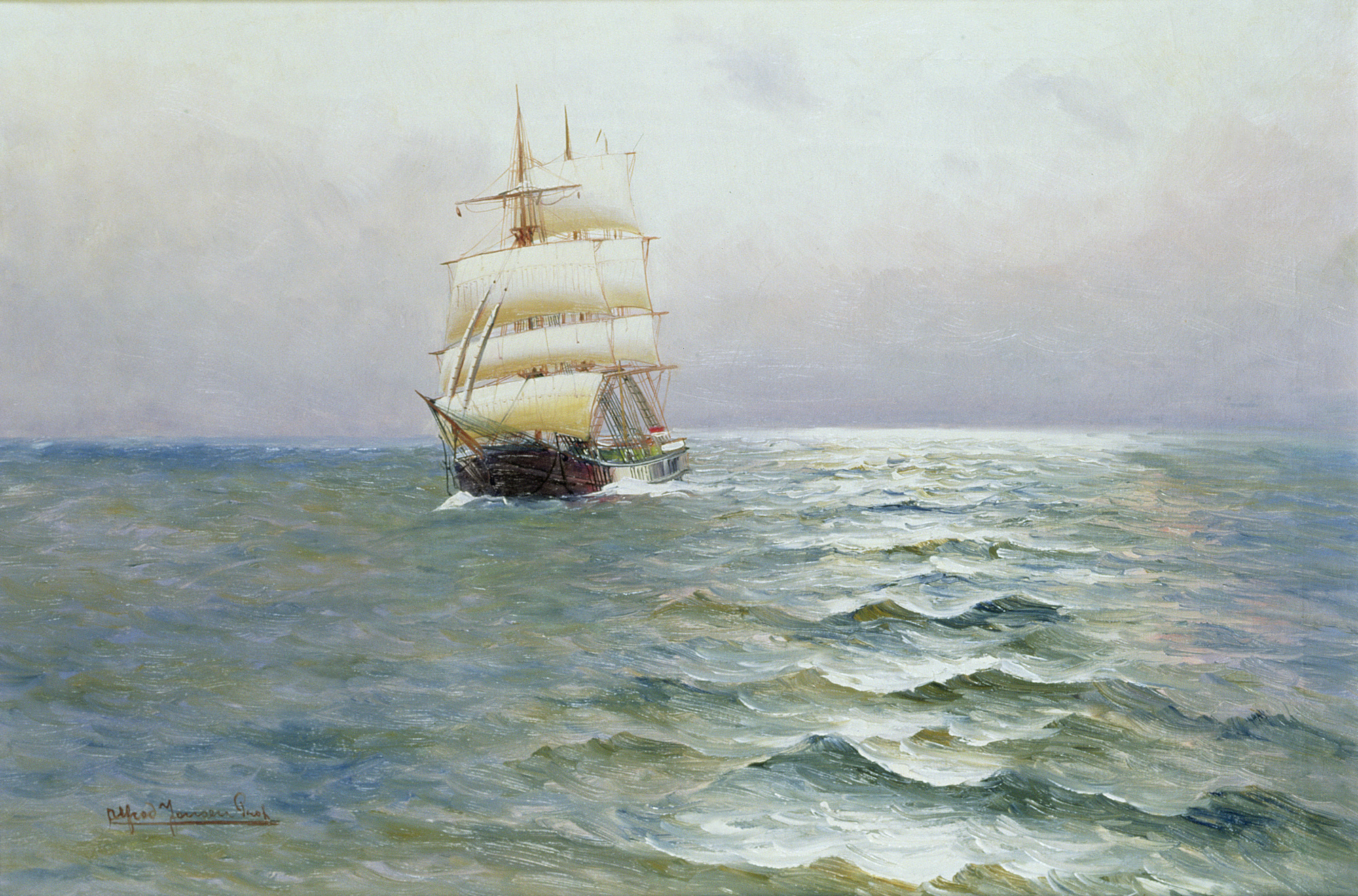In our solar system's proverbial "no man's land,older couple having sex videos" a deep space realm beyond the planets, scientists detected unexpected activity.
This remote area, inhabited by ice-clad worlds like Pluto (a dwarf planet), is called the Kuiper Belt, a donut-shaped region surrounding much of our solar system. It's a relatively little known place, but millions of frozen, "dead" objects are thought to orbit there. Now, astronomers pointed the powerful James Webb Space Telescope at some of these icy objects, and found evidence that they're not so deadafter all.
"We see some interesting signs of hot times in cool places," Christopher Glein, a scientist at the Southwest Research Institute who researches icy worlds, said in a statement.
Glein, who previously conducted research into Saturn's geyser-shooting moon, Enceladus, led this new investigation into the Kuiper Belt objects, which was published in the planetary science journal Icarus.
SEE ALSO: There are mysterious "super-Earths" all over the galaxyThe scientists trained the Webb telescope, which orbits 1 million miles from Earth, on the two largest-known Kuiper Belt objects — Eris and Makemake. This instrument is fitted with specialized cameras that can detect different types of elements or molecules (like water or carbon dioxide) on distant worlds.
What they found was a surprise: The icy orbs and objects of the Kuiper Belt are thought to be preserved, primordial relics of the early solar system. But the frozen methane identified on the surfaces of Eris and Makemake (respectively located, on average, well over 6 and 4 billionmiles away) show these molecules were more recently "cooked up," Glein explained. This suggests hot interiors beneath these icy crusts, capable of propelling liquid or gas onto the surface. The relatively recent methane deposits also suggest that these worlds could potentially even harbor oceans, as shown in the graphic below (similar to icy moons like Europa, which orbits Jupiter).
"Hot cores could also point to potential sources of liquid water beneath their icy surfaces," Glein explained.
 A graphic showing how a heat source near the cores of Eris and Makemake could sustain an ocean, and propel elements to the surface. Credit: Southwest Research Institute
A graphic showing how a heat source near the cores of Eris and Makemake could sustain an ocean, and propel elements to the surface. Credit: Southwest Research Institute  A conception of what the two dwarf planets Eris and Makemake look like. Credit: Southwest Research Institute
A conception of what the two dwarf planets Eris and Makemake look like. Credit: Southwest Research Institute It's even in the realm of possibility that some of these frozen worlds — billions of miles away — could harbor conditions suitable for life to potentially develop — though there's certainly no evidence of that yet.
Perhaps a mission to these cosmic frontiers is due. After all, NASA's New Horizons mission to Pluto (and beyond) revealed a complex world with a diverse topography, including glaciers and mountains made of water ice.
"After the New Horizons flyby of the Pluto system, and with this discovery, the Kuiper Belt is turning out to be much more alive in terms of hosting dynamic worlds than we would have imagined," said Glein. "It’s not too early to start thinking about sending a spacecraft to fly by another one of these bodies to place the JWST data into a geologic context. I believe that we will be stunned by the wonders that await!"
 A graphic showing the Kuiper Belt beyond the orbit of Neptune in our solar system. Credit: NASA
A graphic showing the Kuiper Belt beyond the orbit of Neptune in our solar system. Credit: NASA The Webb telescope — a scientific collaboration between NASA, the ESA, and the Canadian Space Agency — is designed to peer into the deepest cosmos and reveal new insights about the early universe. But it's also peering at intriguing planets in our galaxy, along with the planets and moons in our solar system.
Here's how Webb is achieving unparalleled feats, and likely will for decades:
- Giant mirror: Webb's mirror, which captures light, is over 21 feet across. That's over two-and-a-half times larger than the Hubble Space Telescope's mirror. Capturing more light allows Webb to see more distant, ancient objects. As described above, the telescope is peering at stars and galaxies that formed over 13 billion years ago, just a few hundred million years after the Big Bang.
"We're going to see the very first stars and galaxies that ever formed," Jean Creighton, an astronomer and the director of the Manfred Olson Planetarium at the University of Wisconsin–Milwaukee, told Mashable in 2021.
- Infrared view: Unlike Hubble, which largely views light that's visible to us, Webb is primarily an infrared telescope, meaning it views light in the infrared spectrum. This allows us to see far more of the universe. Infrared has longer wavelengths than visible light, so the light waves more efficiently slip through cosmic clouds; the light doesn't as often collide with and get scattered by these densely packed particles. Ultimately, Webb's infrared eyesight can penetrate places Hubble can't.
"It lifts the veil," said Creighton.
- Peering into distant exoplanets: The Webb telescope carries specialized equipment called spectrographsthat will revolutionize our understanding of these far-off worlds. The instruments can decipher what molecules (such as water, carbon dioxide, and methane) exist in the atmospheres of distant exoplanets — be they gas giants or smaller rocky worlds. Webb will look at exoplanets in the Milky Way galaxy. Who knows what we'll find?
"We might learn things we never thought about," Mercedes López-Morales, an exoplanet researcher and astrophysicist at the Center for Astrophysics-Harvard & Smithsonian, told Mashable in 2021.
Already, astronomers have successfully found intriguing chemical reactions on a planet 700 light-years away, and as described above, the observatory has started looking at one of the most anticipated places in the cosmos: the rocky, Earth-sized planets of the TRAPPIST solar system.
 The Archive of Our Own lyric trend brings a Tumblr meme to Twitter
The Archive of Our Own lyric trend brings a Tumblr meme to Twitter
 Jonathan Lethem on Editing Don Carpenter’s Final Manuscript
Jonathan Lethem on Editing Don Carpenter’s Final Manuscript
 The Morning News Roundup for April 14, 2014
The Morning News Roundup for April 14, 2014
 NYT Connections Sports Edition hints and answers for February 11: Tips to solve Connections #141
NYT Connections Sports Edition hints and answers for February 11: Tips to solve Connections #141
 Google Search can check your grammar now
Google Search can check your grammar now
 Happy Birthday, Donald Barthelme
Happy Birthday, Donald Barthelme
 Twitter's Art Decider will no longer decide what is art
Twitter's Art Decider will no longer decide what is art
 NYT Connections hints and answers for February 1: Tips to solve 'Connections' #601.
NYT Connections hints and answers for February 1: Tips to solve 'Connections' #601.
 On Being a Regular
On Being a Regular
 Man City vs. Real Madrid 2025 livestream: Watch Champions League for free
Man City vs. Real Madrid 2025 livestream: Watch Champions League for free
 'Quordle' today: See each 'Quordle' answer and hints for August 8
'Quordle' today: See each 'Quordle' answer and hints for August 8
 William Hazlitt on Meeting Poet Samuel Taylor Coleridge
William Hazlitt on Meeting Poet Samuel Taylor Coleridge
 The uncommon birds of George Edwards, born today in 1694
The uncommon birds of George Edwards, born today in 1694
 Best GPU deal: Get the MSI RTX 5080 for $1,249.99 at Best Buy
Best GPU deal: Get the MSI RTX 5080 for $1,249.99 at Best Buy
 What We’re Loving: Dead Poets, Dead Magazines, Dead Zoo Gang
What We’re Loving: Dead Poets, Dead Magazines, Dead Zoo Gang
 The Archive of Our Own lyric trend brings a Tumblr meme to Twitter
The Archive of Our Own lyric trend brings a Tumblr meme to Twitter
 Already! (Or, Baudelaire at Sea) by Dan Piepenbring
Already! (Or, Baudelaire at Sea) by Dan Piepenbring
 Did Elon Musk push former FAA leader out? Trump admin responds after deadly plane crash
Did Elon Musk push former FAA leader out? Trump admin responds after deadly plane crash
 The Morning News Roundup for April 9, 2014
The Morning News Roundup for April 9, 2014
Best Beats deal: Save over $50 on Beats Powerbeats Pro 2Laptops specs explained: A jargonBest Samsung Galaxy S25 Edge preorder deal: Get free storage upgrade and $50 Amazon gift cardMeet LegoGPT, an AI model that creates custom Lego setsHow to watch the 2025 Eurovision Song Contest live onlineMeet LegoGPT, an AI model that creates custom Lego setsNew leak gives fresh info on 'allNew GOP bill would basically ban adult content, experts warn'The Last of Us' Season 2: What is the Washington Liberation Front?Kohl's 'lowest prices of the season': Ends May 18Amazon Pet Day: All the best dealsBest Dyson deal: Save $120 on the Dyson V8 vacuum at AmazonTablet on sale: Save 39% on the Samsung Galaxy Tab S6 LiteBest Sonos deal: Save $100 on Sonos Ace at AmazonBest Beats deal: Save $180 on Beats Studio ProPixel devices to get more animated with Material 3 ExpressiveAmazon Pet Day: All the best deals'The Last of Us' Season 2, episode 5 just dropped a big hint about the Rat KingSamsung HWBest robot vacuum deal: Save 67% on the Dreame L40 Ultra at Amazon 18 people who have no idea how to use a computer Amber Tamblyn and David Cross have my permission to name all celebrity babies How to use Instagram albums without losing all your followers Pro tip: How to parry, counter and guard Michael C. Hall makes a great point about David Bowie's Brit award win 'Mass Effect' brings totally f*ckable aliens to 'Cards Against Humanity' The Chainsmokers and Coldplay release a boring song about being boring Seven Earth Katy Perry's Brit Awards performance included a sneaky jab at Trump Project Entrepreneur: ZoomDojo co Users get message about Susan Fowler when trying to delete Uber Rivers in the sky: Why California is flooding iPhone users spent an average of $40 on the App Store in 2016 Sushi donuts will make your Instagram feed a little more delicious in 2017 Google wants to give you back your face when you're in VR Margot Robbie's new ride looks straight out of the future England vs. India 2025 livestream: Watch Test 1 of India Tour of England for free People on Twitter are so confused by Russia's attempt to debunk 'fake news' Microsoft launches Skype Lite for India that works on slow internet and supports Aadhaar This startup buys and fixes up languishing mobile games and tools
2.5366s , 10545.5625 kb
Copyright © 2025 Powered by 【older couple having sex videos】,New Knowledge Information Network